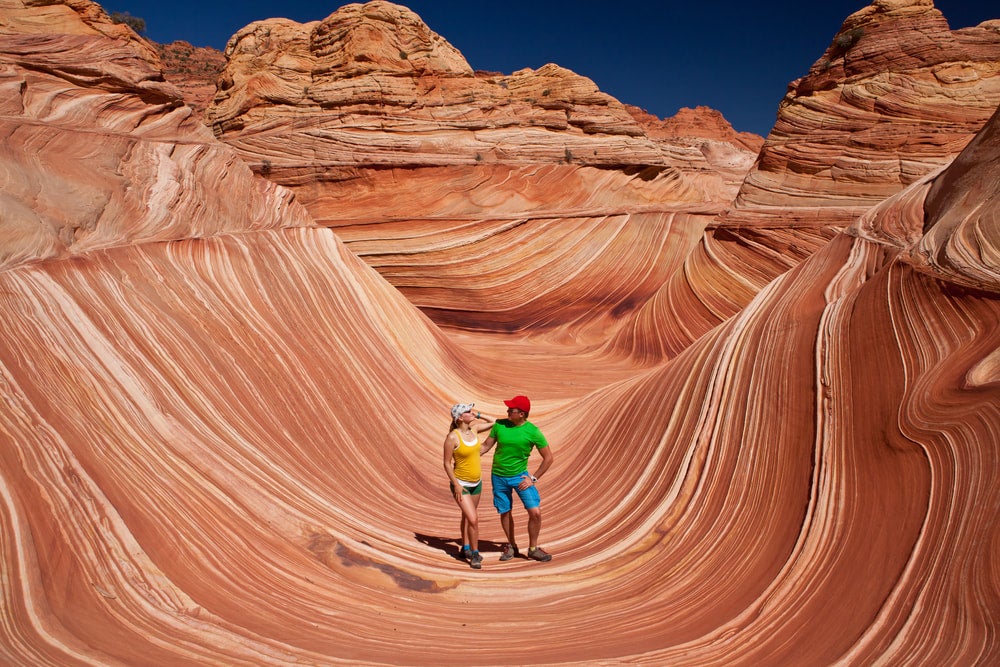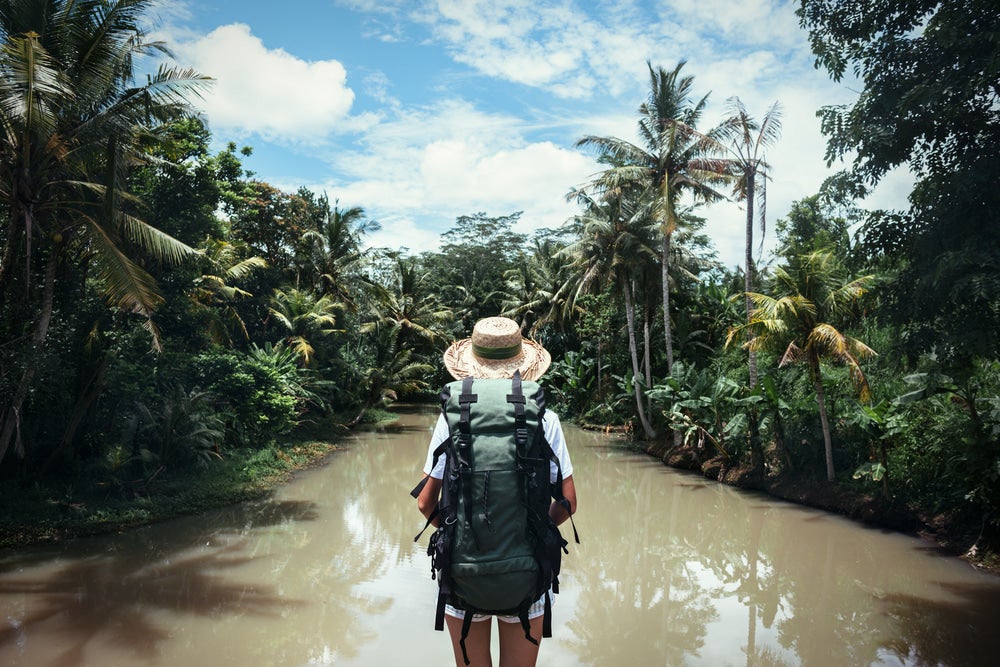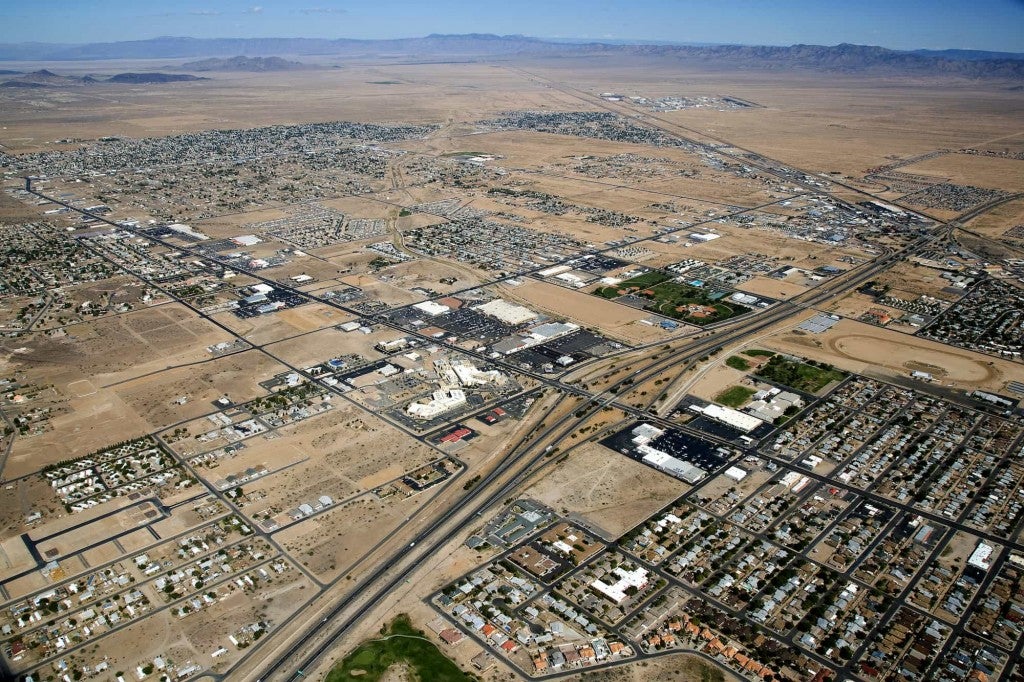Updates to daily quotas might make it easier to secure a permit for The Wave in 2019, raising concerns about overcrowding. Here’s what you need to know about visiting The Wave this year.
We woke early to make the hour-long drive from camp to the BLM Visitor Center in Kanab, Utah, in the hopes of securing an elusive walk-in hiking permit for the internationally-known area called The Wave.
The Wave is an undulating formation of red, orange, and yellow Navajo sandstone that resembles—well, a wave—in Coyote Buttes North, part of the Paria Canyon-Vermilion Cliffs Wilderness Area.
For the hundreds of thousands of hikers who apply to The Wave permit system each year, only 20 are issued each day. You can apply online via lottery, or enter the in-person lottery for a walk-in permit at the Grand Staircase-Escalante National Monument Visitor Center in Kanab. Our goal was to acquire walk-in permits, so we got to the visitor center when the doors opened at 8:00 am.
We arrived in Kanab, lodged our application, and sat in a room filled with dozens of others, where a ranger drew applications, raffle-style. A few names went by until each remaining slot was filled; our name was not called. We headed back to camp and woke the next morning to try again.
We were lucky enough to get permits for the following day, so we got another early start, hiking into the columns and swells of sandstone as the sun peeked over the desert horizon. We were the only ones out there, except for the passing ranger who asked to see our permits on the way back.
This year, that sense of solitude we discovered through access to this highly regulated area might change.
Prepare for your next adventure by downloading maps. The Dyrt PRO lets you download maps and campgrounds without cell service. “My alternative to using pro would be to drive back out to cell service”.
Proposed Changes to The Wave Permit System
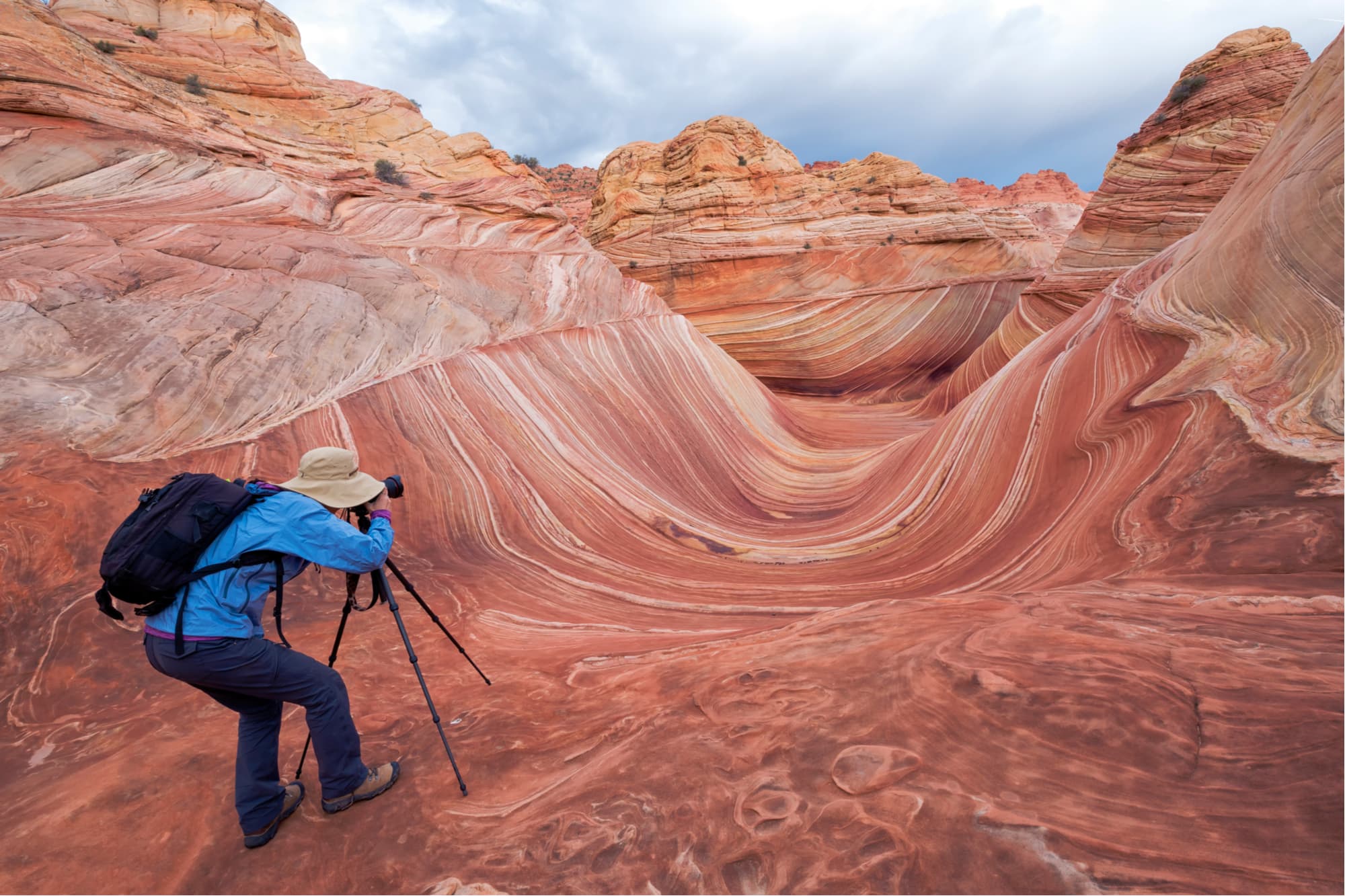
The Bureau of Land Management (BLM) is currently considering raising the number of permits issued each day for the Coyote Buttes North area from the current limit of 20 to as many as 96.
Rachel Carnahan, Public Affairs Officer for the BLM Arizona Strip District, said that “public demand far surpasses the current use allocation. Currently, only 4.3% of visitors are successful in obtaining a permit to access the Wave. In 2018, 168,317 individuals applied for the 7,300 total permits available.”
However, an increase in visitors inherently means more impact on the environment, which could adversely affect the landscape, wildlife, and cultural artifacts. BLM officials plan to examine the costs and benefits of this increase. More information and instructions for submitting public comments on the proposed change can be found here.
Why You Need a Permit to Visit The Wave
Water and wind worked over millions of years to form the landscape of Coyote Buttes. The 112,500 acres of Paria Canyon-Vermilion Cliffs Wilderness was designated in 1984. Ancestral Puebloans once inhabited the area, and cultural artifacts—like petroglyphs—are found throughout the canyons and cliffs. The area is home to raptors, desert bighorn, and other wildlife that thrive in part because of the wilderness designation and controlled number of visitors.
This is why permit systems are established in areas like Coyote Buttes North and South. Monitoring the number of visitors preserves the geologic formations, cultural artifacts, and wildlife habitat. It also makes for a more enjoyable and secluded experience for the lucky few who do visit The Wave.
How to Apply for a Permit to The Wave
The Wave is part of Coyote Buttes North, and you’ll need to secure the elusive permit before you head out. Hikers have two options:
- You can apply for the online lottery four months in advance to try for a permit on a certain day
- Or go to the Grand Staircase-Escalante National Monument Visitor Center in Kanab on the day you hope to hike and enter the lottery for walk-in permits.
Twenty permits for Coyote Buttes North are issued each day, and groups are capped at six people. Only one person from each group can enter the lottery. Half of the daily permits are issued online, and the other half are issued in person. In either case, there’s no guarantee you’ll get a permit. Permits are non-transferable and non-refundable.
There is a $5.00 non-refundable application fee for The Wave permits. You can choose up to three dates per application, though if selected, you will only be allowed one date. If your party is drawn in the lottery, each person pays $7.00 for their permit. Dogs are permitted, at $7.00 per pup.
The Effects of Overcrowding on Destinations Like The Wave
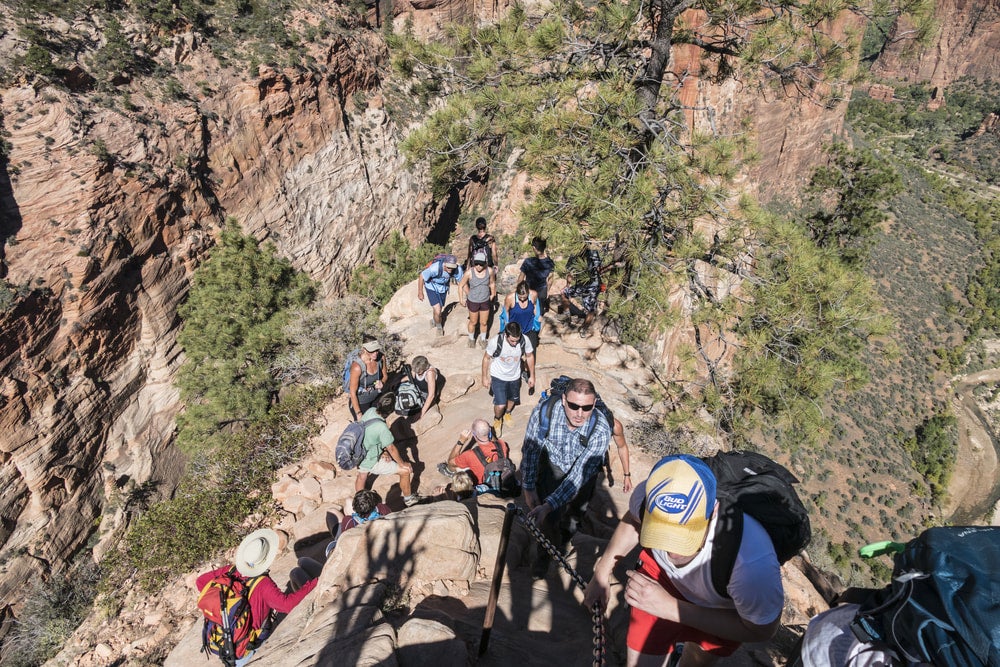
Overcrowded trails in Zion National Park.
Zion National Park, not far from Coyote Buttes, saw more than 4.3 million visitors in 2018. Famous trails like Angel’s Landing (which does not require a permit) are often beyond over-crowded, with parking and camping in the canyon filling up faster than you can get there. Areas like the now Instagram-famous Horseshoe Bend in the Grand Canyon see hordes of tourists—not exactly a quiet wilderness experience. There is rising concern that this same fate could await The Wave wilderness.
Consider this: The hike to The Wave is six miles out and back, and the formation itself is smaller than a football field. A nearly 500% increase in visitors would certainly cause noticeably more crowding in the area. Because of how strict The Wave permit system is at the moment, we were surrounded by peaceful desert, not people, during our hike.
More importantly, an influx of visitors to a landscape as unique and delicate as The Wave puts strain on both the land and the people who manage it. Wildlife habitat is immensely altered by the presence of people. Erosion happens more quickly, trash is inevitably sprinkled into the area, and BLM staff face the challenge of keeping track of more people and more permits.
While the BLM is conscious of these concerns, the question up for debate is whether or not it’s feasible to increase visitor access while preserving the natural environment.
Leaving No Trace at The Wave
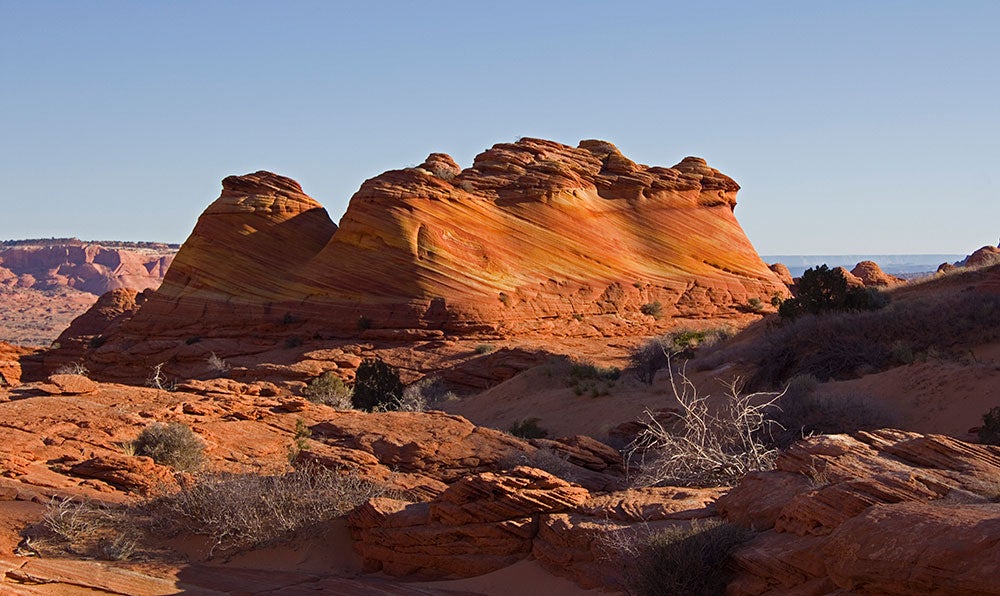
If you are one of the lucky folks to snag The Wave permit, remember to Leave No Trace: carry out all trash, do not take anything from the land, and stay on the trail. Remaining on the designated trail is especially important in desert landscapes; delicate soil is quickly compromised when stepped on. While there is no trail on The Wave formation itself, treat the area with respect as you explore it.
After hiking through loose sand, we approached The Wave just as the sun was beginning to warm the sandstone walls. We examined the sandstone in awe, snapping photos to commemorate our hike. As someone with a deep love for desert landscapes, I want more people to experience this place and its wonder. However, it’s an area worth preserving for more reasons than human enjoyment alone.
It is vital to the landscape that we consider the implications of more visitors, even if the permit system is far from meeting the demands of hikers wanting to see The Wave for themselves. Either way, the BLM is paying attention. “The BLM has been conducting monitoring on Coyote Buttes for a number of years, to determine if current use [is] impacting the physical resources of the area,” said Carnahan. “The BLM will continue monitoring the area whether or not an increase is approved.”
The Dyrt is the only camping app with all of the public and private campgrounds, RV parks, and free camping locations in the United States. Download now for iOS and Android.Popular Articles:
Articles on The Dyrt Magazine may contain links to affiliate websites. The Dyrt receives an affiliate commission for any purchases made by using such links at no additional cost to you the consumer.

